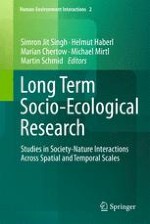
2013 | OriginalPaper | Chapter
1. Introduction
Authors : Simron Jit Singh, Ph.D., Helmut Haberl, Ph.D., Marian Chertow, Ph.D., Michael Mirtl, Ph.D., Martin Schmid, Ph.D.
Published in: Long Term Socio-Ecological Research
Publisher: Springer Netherlands
Activate our intelligent search to find suitable subject content or patents.
Select sections of text to find matching patents with Artificial Intelligence. powered by
Select sections of text to find additional relevant content using AI-assisted search. powered by